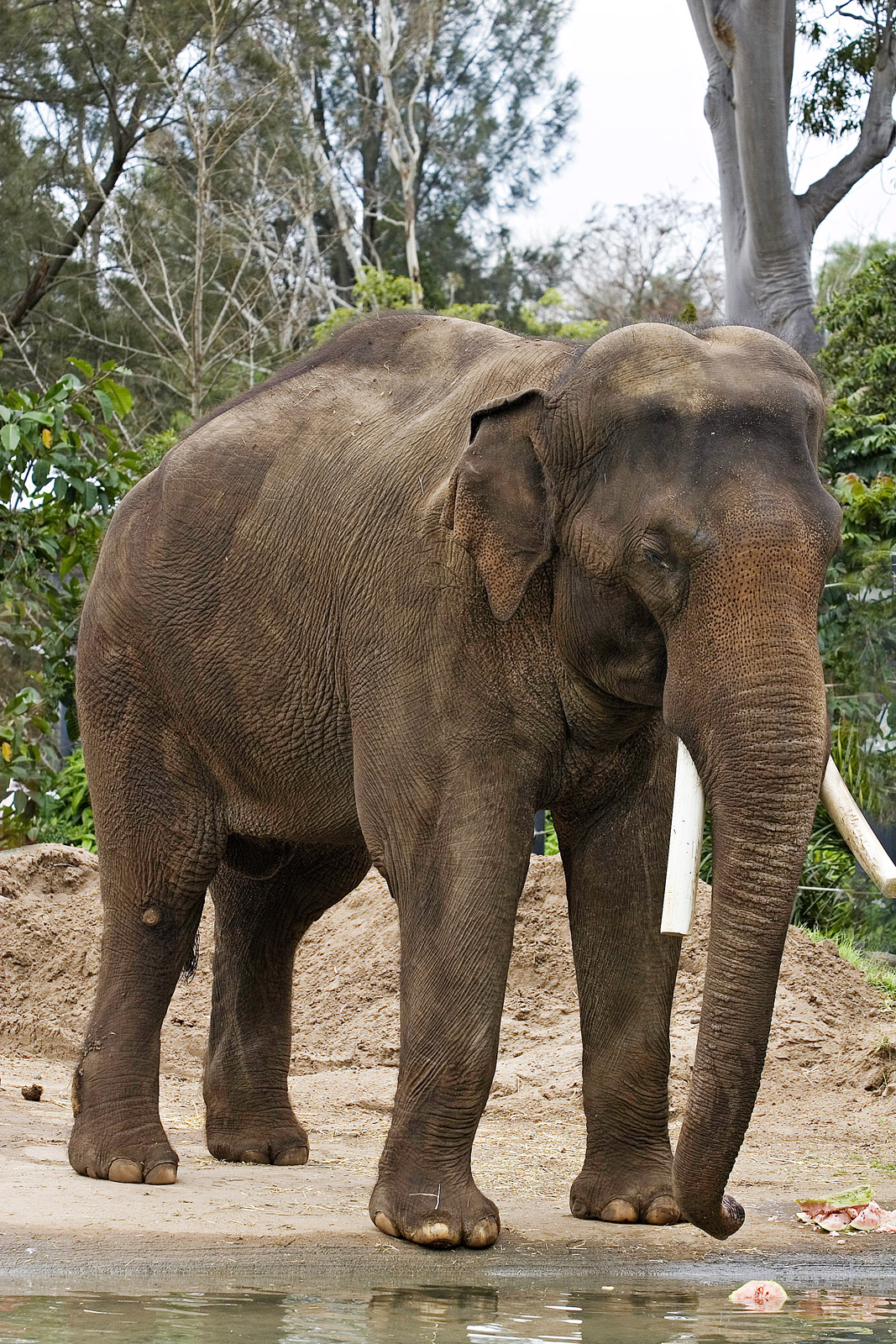|
Funambulus Layardi
Layard's palm squirrel or flame-striped jungle squirrel (''Funambulus layardi'') is a species of rodent in the family Sciuridae endemic to Sri Lanka. The validity of the subspecies ''F. l. dravidianus'' based on a single specimen from the southern tip of India has been questioned, and is probably a juvenile '' F. sublineatus''. Known as මූකලන් ලේනා (''mukalan lena'') in Sinhala. Distribution It is endemic to the central highlands of Sri Lanka. Few observations are known out of central hills, such as from Trincomalee and Matara districts, but it remains unresolved. It can be seen in Knuckles mountain range and other high altitude ranges in western basin of the central hills. Description Its head and body length is 12–17 cm, with a 14-cm tail. In color, it is blackish brown with three stripes on its dorsum; the central stripe is broadest and longest with an orange hue in ''F. signatus'', yellow in ''F. layardi''. Its underparts are reddish orange in colo ... [...More Info...] [...Related Items...] OR: [Wikipedia] [Google] [Baidu] |
Edward Blyth
Edward Blyth (23 December 1810 – 27 December 1873) was an English zoologist who worked for most of his life in India as a curator of zoology at the Asiatic Society, Royal Asiatic Society of Bengal in Calcutta. He set about updating the museum's catalogues, publishing a ''Catalogue of the Birds of the Asiatic Society'' in 1849. He was prevented from doing much fieldwork himself, but received and described bird specimens from Allan Octavian Hume, A.O. Hume, Samuel Tickell, Robert Swinhoe among others. His ''Natural History of the Cranes'' was published posthumously in 1881. Early life and work On 23 December 1810, Blyth was born in London. His father, a cloth merchant, clothier, died in 1820 and his mother sent him to Dr. Fennell's school in Wimbledon, London, Wimbledon. He took an interest in reading, but was often to be found spending time in the woods nearby. Leaving school in 1825, he went to study chemistry, at the suggestion of Dr. Fennell, in London under Dr. Keating at S ... [...More Info...] [...Related Items...] OR: [Wikipedia] [Google] [Baidu] |
Matara, Sri Lanka
Matara (; ) is a major city in Sri Lanka, on the southern coast of Southern Province, Sri Lanka, Southern Province. It is the second largest city in Southern Province, Sri Lanka, Southern Province. It is from Colombo. It is a major commercial hub, the administrative capital and largest city of Matara District. Ethnic composition in Matara DS Division according to 2012 census data is Sinhalese 111,039-95.88%, Muslims 4,296-3.71%, Tamils 326-0.28%, Others 144-0.12%. Etymology Consisting of two elements, the term Matara gives its meaning as ''the Great Ferry'', that may be the meaning "great seaport" or "great fortress". It is also thought as being derived from the mispronunciation of the word 'Matora' by the Portuguese who called it 'Mature' or ''Maturai'' in 1672. The native word 'Matora' might also derived from 'Maha Tera' meaning the place where the Great River was crossed. It was also called 'Maha Tota' (Malo Tota) or Maha-Pattana, the great ferry.''Maha Ethara'' meani ... [...More Info...] [...Related Items...] OR: [Wikipedia] [Google] [Baidu] |
Mammals Described In 1849
A mammal () is a vertebrate animal of the Class (biology), class Mammalia (). Mammals are characterised by the presence of milk-producing mammary glands for feeding their young, a broad neocortex region of the brain, fur or hair, and three Evolution of mammalian auditory ossicles, middle ear bones. These characteristics distinguish them from reptiles and birds, from which their ancestors Genetic divergence, diverged in the Carboniferous Period over 300 million years ago. Around 6,640 Neontology#Extant taxon, extant species of mammals have been described and divided into 27 Order (biology), orders. The study of mammals is called mammalogy. The largest orders of mammals, by number of species, are the rodents, bats, and eulipotyphlans (including hedgehogs, Mole (animal), moles and shrews). The next three are the primates (including humans, monkeys and lemurs), the Artiodactyl, even-toed ungulates (including pigs, camels, and whales), and the Carnivora (including Felidae, ... [...More Info...] [...Related Items...] OR: [Wikipedia] [Google] [Baidu] |
Mammals Of Sri Lanka
This is a list of the mammal species recorded in Sri Lanka, with their respective names in Sinhala language, Sinhala also listed. There are 125 mammal species in Sri Lanka, of which one is critically endangered, ten are endangered, ten are vulnerable, and three are near threatened. The following tags are used to highlight each species' conservation status as assessed by the International Union for Conservation of Nature: Some species were assessed using an earlier set of criteria. Species assessed using this system have the following instead of near threatened and least concern categories: Mammalian diversity Order: Proboscidea (elephants) Order: Sirenia (manatees and dugongs) Sirenia is an order of fully aquatic, herbivorous mammals that inhabit rivers, estuaries, coastal marine waters, swamps, and marine wetlands. All four species are endangered. *Genus: ''Dugong'' **Dugong, ''D. dugon'' මුහුදු ඌරා Order: Primates The order Primates contains ... [...More Info...] [...Related Items...] OR: [Wikipedia] [Google] [Baidu] |
Funambulus
''Funambulus'' is a genus of rodents in the Sciuridae Squirrels are members of the family Sciuridae (), a family that includes small or medium-sized rodents. The squirrel family includes tree squirrels, ground squirrels (including chipmunks and prairie dogs, among others), and flying squirrel ... (squirrel) family, the only one in tribe Funambulini. It contains these species: * Genus ''Funambulus'' ** Subgenus ''Funambulus'' *** Layard's palm squirrel (''F. layardi'') *** Dusky palm squirrel (''F. obscurus'') *** Indian palm squirrel (''F. palmarum'') *** Nilgiri striped palm squirrel (''F. sublineatus'') *** Jungle palm squirrel (''F. tristriatus'') ** Subgenus ''Prasadsciurus'' *** Northern palm squirrel (''F. pennantii'') Etymology "Funambulus" is the Latin word for "rope-dancer". References Rodent genera Taxa named by René Lesson Taxonomy articles created by Polbot {{Squirrel-stub ... [...More Info...] [...Related Items...] OR: [Wikipedia] [Google] [Baidu] |
Habitat Destruction
Habitat destruction (also termed habitat loss or habitat reduction) occurs when a natural habitat is no longer able to support its native species. The organisms once living there have either moved elsewhere, or are dead, leading to a decrease in biodiversity and species numbers. Habitat destruction is in fact the leading cause of biodiversity loss and species extinction worldwide. Humans contribute to habitat destruction through the use of natural resources, agriculture, industrial production and urbanization (urban sprawl). Other activities include mining, logging and trawling. Environmental factors can contribute to habitat destruction more indirectly. Geological processes, climate change, introduction of invasive species, ecosystem nutrient depletion, water and noise pollution are some examples. Loss of habitat can be preceded by an initial habitat fragmentation. Fragmentation and loss of habitat have become one of the most important topics of research in ecology as the ... [...More Info...] [...Related Items...] OR: [Wikipedia] [Google] [Baidu] |
Knuckles Mountain Range
The Dumbara Mountain Range lies in central Sri Lanka, in the Districts of Matale and Kandy. The Sinhalese residents have traditionally referred to the area as ''Dumbara Kanduvetiya'' meaning Mist-laden Mountain Range. Early British surveyors gave the name ''knuckles'', referring to a series of recumbent folds and peaks in the west of the massif which resemble the knuckles of clenched fist when viewed from certain locations in the Kandy District. The higher montane area is often robed in thick layers of cloud. In addition to its aesthetic value, the range is of great scientific interest. It is a climatic microcosm of the rest of Sri Lanka as the conditions of all the climatic zones in the country are exhibited in the massif. At higher elevations there is a series of isolated cloud forests, harbouring a variety of flora and fauna. Although the range constitutes approximately 0.03% of the island's total area, it is home to a significantly higher proportion of the country's bio ... [...More Info...] [...Related Items...] OR: [Wikipedia] [Google] [Baidu] |
Trincomalee
Trincomalee (; , ; , ), historically known as Gokanna and Gokarna, is the administrative headquarters of the Trincomalee District and major resort port city of Eastern Province, Sri Lanka, Eastern Province, Sri Lanka. Located on the east coast of the island overlooking the Trincomalee Harbour, Trincomalee has been one of the main centres of Sri Lankan Tamil dialects, Sri Lankan Tamil speaking culture on the island for nearly a millennium. With a population of 99,135, the city is built on a peninsula of the same name, which divides its inner and outer harbours. It is home to the famous Koneswaram temple from where it developed and earned its historic Tamil name ''Thirukonamalai''. The town is home to other historical monuments such as the Pathirakali Amman Temple, Bhadrakali Amman Temple, Trincomalee, the Trincomalee Hindu Cultural Hall and, opened in 1897, the R. K. M. Sri Koneswara Hindu College, Trincomalee Hindu College. Trincomalee is also the site of the Trincomalee railway s ... [...More Info...] [...Related Items...] OR: [Wikipedia] [Google] [Baidu] |
Rodent
Rodents (from Latin , 'to gnaw') are mammals of the Order (biology), order Rodentia ( ), which are characterized by a single pair of continuously growing incisors in each of the upper and Mandible, lower jaws. About 40% of all mammal species are rodents. They are native to all major land masses except for Antarctica, and several oceanic islands, though they have subsequently been introduced to most of these land masses by human activity. Rodents are extremely diverse in their ecology and lifestyles and can be found in almost every terrestrial habitat, including human-made environments. Species can be arboreal, fossorial (burrowing), saltatorial/ricochetal (leaping on their hind legs), or semiaquatic. However, all rodents share several morphological features, including having only a single upper and lower pair of ever-growing incisors. Well-known rodents include Mouse, mice, rats, squirrels, prairie dogs, porcupines, beavers, Cavia, guinea pigs, and hamsters. Once included wi ... [...More Info...] [...Related Items...] OR: [Wikipedia] [Google] [Baidu] |
Funambulus Sublineatus
The Nilgiri striped squirrel (''Funambulus sublineatus'') is a threatened species of rodent, a small squirrel (Sciuridae) from rainforests in the southern Western Ghats, including the Nilgiris, in Peninsular India. It formerly included ''Funambulus obscurus'' from Sri Lanka as a subspecies, at which point the English name of the "combined species" also was dusky striped squirrel (a name now restricted to the Sri Lankan species). Taxonomy ''Funambulus sublineatus'' was scientifically described in 1838. Later it was merged with the Sri Lankan ''obscurus'', then regarded as a subspecies of ''Funambulus sublineatus''. In 2012, a review found that the two were highly distinct and recommended that they should be recognized as separate species.Rajith Dissanayake. 2012The Nilgiri striped squirrel (''Funambulus sublineatus''), and the dusky striped squirrel (''Funambulus obscurus''), two additions to the endemic mammal fauna of India and Sri Lanka. ''Small Mammal Mail.'' Vol 3(2):6-7 D ... [...More Info...] [...Related Items...] OR: [Wikipedia] [Google] [Baidu] |
India
India, officially the Republic of India, is a country in South Asia. It is the List of countries and dependencies by area, seventh-largest country by area; the List of countries by population (United Nations), most populous country since 2023; and, since its independence in 1947, the world's most populous democracy. Bounded by the Indian Ocean on the south, the Arabian Sea on the southwest, and the Bay of Bengal on the southeast, it shares land borders with Pakistan to the west; China, Nepal, and Bhutan to the north; and Bangladesh and Myanmar to the east. In the Indian Ocean, India is near Sri Lanka and the Maldives; its Andaman and Nicobar Islands share a maritime border with Thailand, Myanmar, and Indonesia. Modern humans arrived on the Indian subcontinent from Africa no later than 55,000 years ago., "Y-Chromosome and Mt-DNA data support the colonization of South Asia by modern humans originating in Africa. ... Coalescence dates for most non-European populations averag ... [...More Info...] [...Related Items...] OR: [Wikipedia] [Google] [Baidu] |






